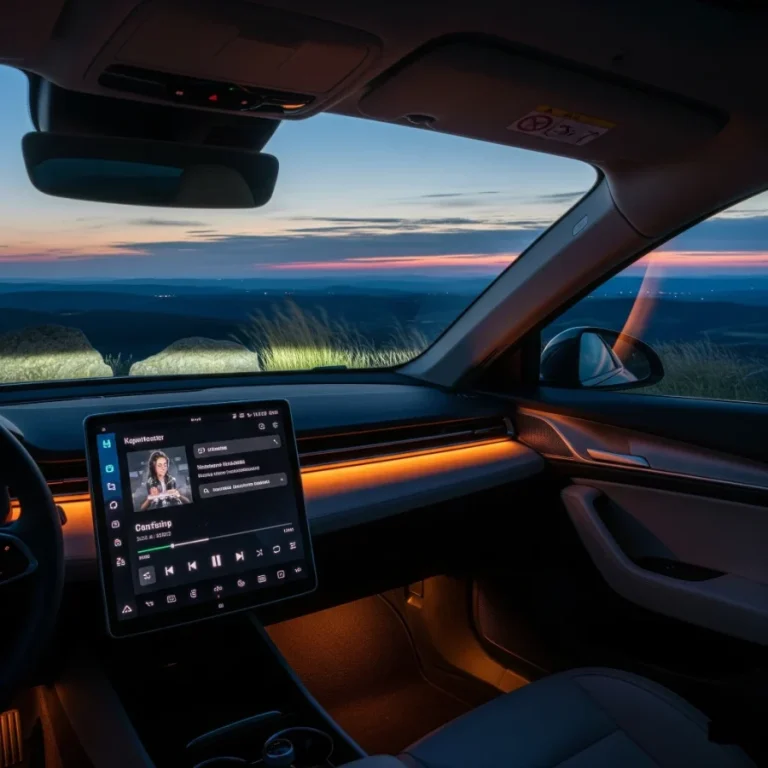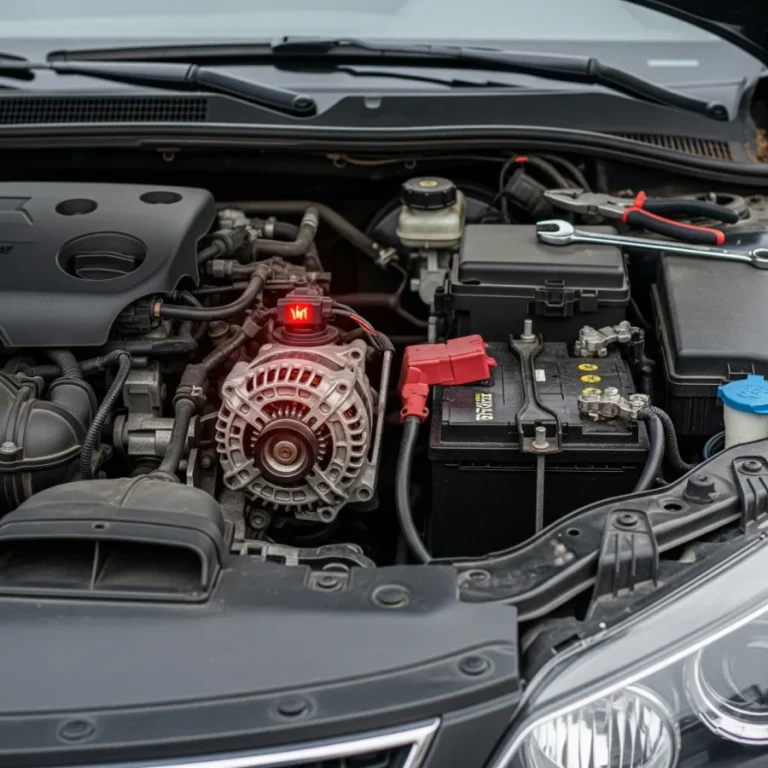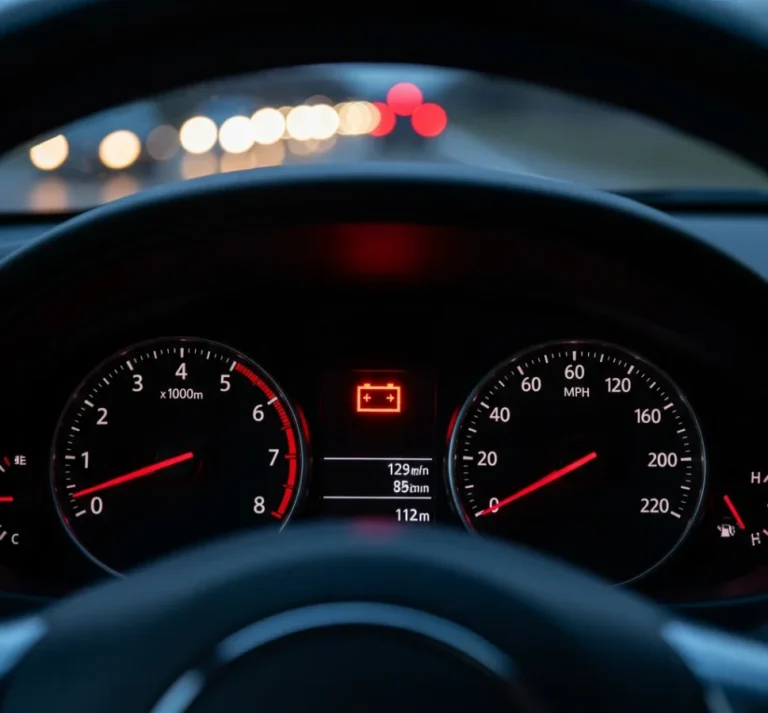How to Reset Your Car Computer Without Disconnecting the Battery
Key Takeaways
- What it is: A car computer reset clears your vehicle’s Engine Control Unit’s (ECU) short-term memory, known as the Keep Alive Memory (KAM). This action can resolve minor electronic glitches or turn off a Check Engine Light that was triggered by a temporary issue.
- The Methods: You can often perform a reset without any tools by using the ignition cycle method, pulling the correct fuse, or performing a manufacturer-specific “pedal dance.”
- The Best Way: The safest, most effective, and professionally recommended method is to use an affordable OBD-II scanner. This tool reads the specific fault code before clearing it, telling you why the light was on.
- After the Reset: It is critical to perform a “drive cycle” after resetting the ECU. This allows your car’s computer to re-learn its optimal settings and ensures it runs smoothly.
What Does Resetting Your Car’s Computer Actually Do?
Think of your car’s Engine Control Unit (ECU) as its brain. It constantly monitors sensors and makes thousands of tiny adjustments to keep your engine running efficiently and safely.
To do this, it uses a short-term memory bank called the Keep Alive Memory (KAM). The KAM is where the ECU stores temporary information, including learned adjustments for your driving style and, importantly, Diagnostic Trouble Codes (DTCs). When your Check Engine Light comes on, it’s because the ECU has stored a trouble code in the KAM.
A car computer reset simply erases this temporary memory. It’s the automotive equivalent of rebooting your computer to fix a minor software glitch. This is a common first troubleshooting step, but it’s important to remember it is not a permanent fix for a real mechanical or electrical failure.
When You Should (and Shouldn’t) Reset Your ECU
Resetting your ECU can be useful, but doing it at the wrong time can make a problem harder to diagnose. Here’s how to know when it’s a good idea.
Good Reasons to Perform a Reset
- You had a loose gas cap, tightened it, but the Check Engine Light is still on.
- You just replaced a minor component, like an oxygen sensor or MAF sensor, and want to clear the old codes.
- Your car experienced a sudden, minor performance hiccup that you suspect was just a temporary glitch.
Critical Warning: When a Reset is the WRONG Move
A reset erases the very data a mechanic needs to find the root cause of a problem. DO NOT reset your ECU under these conditions:
- If the Check Engine Light is FLASHING. A flashing light almost always indicates a serious engine misfire. Driving the vehicle can cause expensive damage to your catalytic converter. Pull over safely and call for a tow.
- If you have serious, persistent symptoms. If your car is stalling, overheating, making strange noises, or you see smoke, a reset will not help. You need a professional diagnosis.
3 Ways to Reset a Car Computer Without Disconnecting the Battery
Here are three common methods, starting with the simplest. Always make sure your car is in Park or Neutral with the parking brake engaged before you begin.
Method 1: The Ignition Cycle (Easiest First Step)
This incredibly simple sequence can sometimes be enough to make the ECU re-run its self-check and clear a non-critical code. It doesn’t always work, but it costs nothing to try.
- Insert the key into the ignition.
- Turn the key to the “On” position. This is the position where the dashboard lights and radio turn on, but the engine is NOT running.
- Leave the key in the “On” position for about one minute.
- Turn the key back to the “Off” position and wait at least 30 seconds.
- Repeat this process two or three times.
- Start the car normally to see if the Check Engine Light has cleared.
Method 2: The Fuse Pull (Most Common Non-Battery Method)
This method involves temporarily cutting power directly to the ECU, which forces the internal capacitors to drain and clears the KAM.
- Make sure your vehicle is completely turned OFF.
- Locate your vehicle’s fuse box. Most cars have one under the driver’s side dashboard and a second one in the engine bay.
- Crucial Step: Check your owner’s manual to identify the correct fuse. It is typically labeled “ECU,” “PCM,” “ECM,” or sometimes “EFI.”
- Using a fuse puller (often found inside the fuse box lid) or a pair of needle-nose pliers, carefully remove the correct fuse.
- Leave the fuse out for 10-15 minutes. This is the time needed for the memory to fully clear.
- Re-insert the fuse securely back into its original slot.
- Start the car. The ECU is now reset.
Method 3: The “Pedal Dance” (For Specific Models)
Some manufacturers, most notably Nissan and Infiniti, have a hidden diagnostic mode that can be accessed through a specific sequence of key turns and accelerator pedal presses. This is often called the “pedal dance.”
While the exact sequence is too specific to list for all models, a quick search for your vehicle (e.g., “2015 Nissan Altima pedal reset procedure”) in an owner’s forum will usually provide the exact steps. This method is very effective if your vehicle supports it.
The Pro Method: Why an OBD-II Scanner is a Better Choice
While the methods above work, they are essentially blind resets. The professional and smartest way to deal with a Check Engine Light is by using an OBD-II scanner.
Every car manufactured since 1996 has an On-Board Diagnostics (OBD-II) port, usually located under the dashboard on the driver’s side.
Key Advantages of Using a Scanner
- Diagnosis, Not Guesswork: A scanner reads the exact trouble code from the ECU. It tells you why the light is on (e.g., “P0442: Small Evaporative System Leak”) instead of just letting you turn it off.
- Informed Decisions: Knowing the code helps you decide if it’s a simple DIY fix or something that requires a mechanic.
- Safe and Simple: You can clear the code with the press of a button without pulling fuses or performing complex procedures.
You don’t need to buy a $500 tool anymore. Modern Bluetooth OBD-II adapters are available online for under $30 and sync directly with powerful apps on your smartphone. It’s an essential tool for any car owner in 2025.
The Most Overlooked Step: Performing a “Drive Cycle”
WARNING: Do not skip this step! After any ECU reset, the computer’s memory is a blank slate. You must perform a drive cycle to allow it to re-learn how to operate your car efficiently.
What is a Drive Cycle?
A drive cycle is a specific routine of starting, idling, and driving at various speeds (city and highway). This process allows the ECU to run all of its internal self-tests and gather data from every sensor to optimize performance.
Why is it Critical?
- Until the drive cycle is complete, your car may run poorly. You might notice a rough idle, poor fuel economy, or hesitant gear shifts as the computer operates on generic, default settings.
- You will automatically fail an emissions test if the ECU’s “Readiness Monitors” are not set to “Ready.” This only happens after a successful drive cycle.
A General Purpose Drive Cycle Procedure
This generic procedure will work for most vehicles, but for the best results, check your owner’s manual.
- Cold Start: With the engine cold, start the car and let it idle in Park for 2-3 minutes. This allows the O2 sensor to warm up.
- City Driving: Accelerate smoothly and drive in normal stop-and-go traffic for about 10 minutes, reaching speeds between 25-45 mph (40-72 kph).
- Highway Driving: Safely merge onto a highway and drive at a steady speed between 55-65 mph (88-105 kph) for 15-20 minutes. Avoid using cruise control if possible.
- Coast Down: Safely let your vehicle coast down (without using the brake, if traffic allows) from highway speed to around 20 mph (32 kph).
- Drive for another 5 minutes in city conditions before parking.
Frequently Asked Questions (FAQ)
Can resetting a car computer fix problems?
Yes, a reset can fix problems caused by minor electronic glitches or temporary sensor errors. For example, if a Check Engine Light came on due to a loose gas cap, a reset will clear the light. However, it will not fix underlying mechanical or electrical failures.
How long does it take for a car computer to reset?
The reset itself is almost instant once power is cut and restored. If using the fuse pull method, you should wait 10-15 minutes after removing the fuse to ensure the internal memory (capacitors) fully drains. The subsequent “drive cycle” to re-learn parameters can take anywhere from 20 to 40 minutes of combined city and highway driving.
What is an ECU reset?
An ECU reset (or car computer reset) is the process of clearing the short-term, volatile memory of your car’s Engine Control Unit. This memory, called the Keep Alive Memory (KAM), stores temporary data and learned values. A reset essentially forces the computer to start fresh and re-learn its operating parameters.
Is there a physical reset button on a car?
No, cars do not have a single “reset button” for the main computer like you might find on a home router. The reset procedure is performed through a sequence of actions, such as disconnecting power (via the battery or a specific fuse) or using a diagnostic scanner.
Can I reset my car computer at home?
Absolutely. All the methods described in this article—the ignition cycle, the fuse pull, and using an affordable OBD-II scanner—are safe and easy to perform at home with basic knowledge and caution.
Conclusion: From Blind Reset to Smart Diagnosis
Resetting your car’s computer can be a quick fix for minor electronic issues. The ignition cycle, fuse pull, and pedal dance methods are all effective ways to do it without disconnecting your battery.
However, a truly smart car owner knows that understanding the problem is better than just erasing the warning light. Investing in an inexpensive OBD-II scanner is the single best step you can take to move from blind resets to intelligent diagnosis.
And remember, after any reset, always perform a drive cycle to restore your car’s performance. For any problem that returns or for any serious safety issue, the best tool is always a trusted, professional mechanic.






